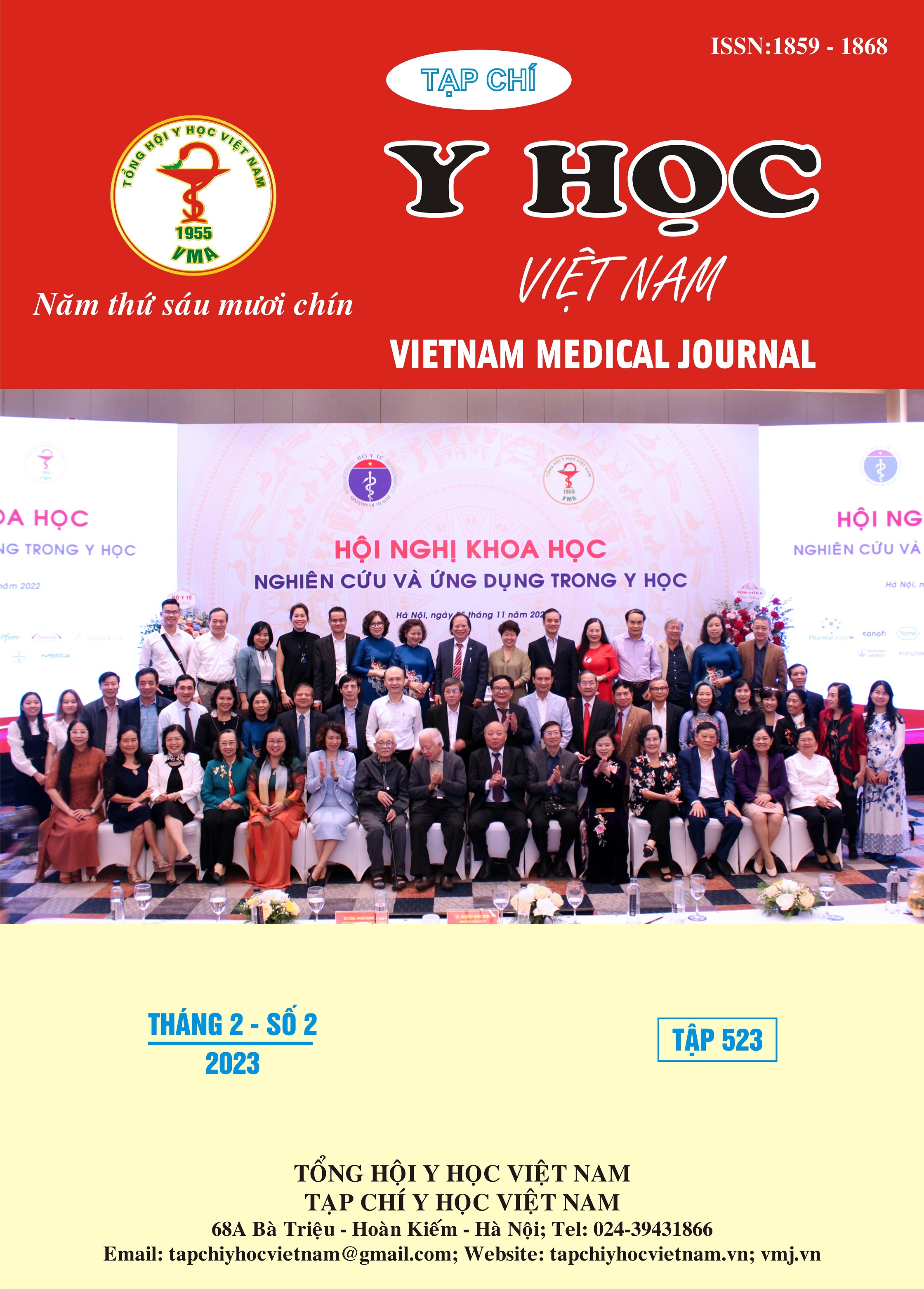EVALUATION RESULTS OF TRANSARTICULAR SCREW SURGERY FOR C1-C2 INSTABILITY FRACTURE LONGTERM FOLLOWUP
Main Article Content
Abstract
Objectives: To evaluate the results of distant treatment of C1-C2 instability fracture patients treated by the transarticular screw surgery. Subjects and method: Retrospective study to follow up 32 patients with confirmed C1 - C2 instability injury and C1 - C2 transarticular screw surgery at the posterior cervical line at Viet Duc hospital from June 2006 to June 2011. Results: Average age 31.58, male/female ratio ≈ 2, the leading cause of injury is traffic accident, accounting for 87.5%; Functional symptoms before surgery neck pain and stiff neck in 100% of patients, ten years after surgery only one patient with neck pain and two patients with a stiff neck. Five patients with preoperative nerve paralysis A (C) after surgery recovered well A (E). There were 2 cases of neck pain and stiffness due to a fracture of the transarticular screw on one side. Conclusion: Transarterial screw surgery after treatment of C1-C2 instability injury is a safe and effective long-term surgery. However, it should be considered in the case of patients with pathological conditions that cause hypertonia or dyskinesia in the neck muscles because of the high risk of screw breakage.
Article Details
Keywords
transarticular screw, C1-C2 unstable fracture.
References
2. Hoàng Gia Du (2012), Nghiên cứu chẩn đoán và phẫu thuật vít qua khớp trong điều trị chấn thương mất vững C1 - C2, Luận án Tiến sỹ y học, Trường Đại học Y Hà Nội.
3. T. T. Roberts, G. R. Leonard và D. J. Cepela (2017), "Classifications In Brief: American Spinal Injury Association (ASIA) Impairment Scale", Clin Orthop Relat Res, 475(5), tr. 1499-1504.
4. H. Vernon và S. Mior (1991), "The Neck Disability Index: a study of reliability and validity", J Manipulative Physiol Ther, 14(7), tr. 409-15.
5. W. I. Campbell và S. Lewis (1990), "Visual analogue measurement of pain", Ulster Med J, 59(2), tr. 149-54.
6. Alexander R. Vaccaro. (2002), Fractures of the cervical, thoracic and lumbar spine, Marcel Dekker, Inc.
7. Hà Kim Trung (2005), "Nghiên cứu chẩn đoán và phẫu thuật chấn thương cột sống cổ có thương tổn thần kinh tại Bệnh viện Việt Đức", Luận án tiến sĩ y học - Trường Đại học Y Hà Nội.
8. C. Michel, C. Dijanic, G. Abdelmalek và các cộng sự. (2022), "Upper cervical spine instability systematic review: a bibliometric analysis of the 100 most influential publications", J Spine Surg, 8(2), tr. 266-275.
9. M. H. Bloch và J. F. Leckman (2009), "Clinical course of Tourette syndrome", J Psychosom Res, 67(6), tr. 497-501.
10. Joachim K. Krauss và Joseph Jankovic (1996), "Severe motor tics causing cervical myelopathy in Tourette's syndrome", Movement Disorders, 11(5), tr. 563-566.


